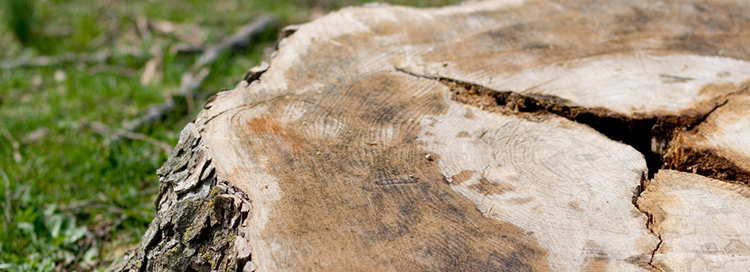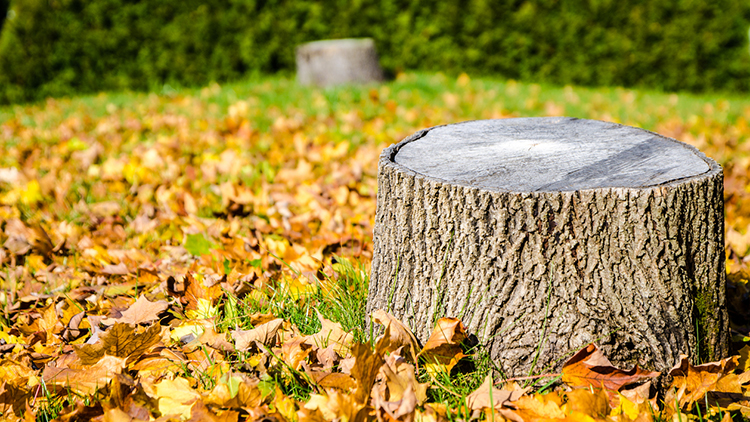
- Aug 5, 2023
- Dreamworks Tree Services
- Stump Grinding and Removal
- 0 Comments
How to Decompose a Tree Stump Naturally
Having a tree stump in your yard can be an eyesore and a potential hazard. Whether it’s the remains of a felled tree or an old stump that has been there for years, getting rid of it is essential to maintain a tidy and safe outdoor space. While there are various methods of tree stump removal, one eco-friendly and budget-friendly approach is to let nature take its course and decompose the stump naturally.
This article explores several effective methods for decomposing a tree stump naturally, helping you achieve a stump-free yard without harming the environment.
Quick & Natural Tree Stump Removal Method: Rotting
Using High-Nitrogen Fertilizer
High-nitrogen fertilizers can significantly speed up the natural decomposition process of a tree stump. Nitrogen is a vital element that promotes the growth of bacteria and fungi, essential decomposers. The method includes:
- Drill several deep holes into the stump using a large drill bit.
- Fill the holes with the high nitrogen fertilizer, ensuring it reaches the core of the stump.
- Moisten the stump regularly to keep it damp, as moisture is crucial for decomposition.
- Cover the stump with a tarp or plastic to retain moisture and heat, further accelerating the rotting process.
Using Epsom Salt
Epsom salt, also known as magnesium sulphate, can be an effective and natural way to speed up stump decomposition. The salt draws moisture out of the stump, creating an unfavourable environment for its survival. To use Epsom salt for stump removal, follow these steps:
- Drill several holes into the stump, similar to the high nitrogen fertilizer method.
- Fill the holes with Epsom salt.
- Moisten the stump regularly, as moisture helps the salt to penetrate deeper into the wood.
- Cover the stump with a plastic bag to maintain moisture and prevent rain from diluting the salt’s effect.
Using a Plastic Bag
This method utilizes the greenhouse effect to create a warm and humid environment around the stump, accelerating the natural decay. Here’s how to use a plastic bag for tree stump removal:
- Cut off the stump as close to the ground as possible.
- Cover the stump with a large, thick, black plastic bag, securing it tightly around the base.
- Check the stump periodically, ensuring it remains moist and warm inside the bag.
Using Rock Salt
Rock salt is a potent substance that can kill the stump and encourage faster decomposition. However, it’s important to note that it can also harm surrounding plants and soil, so use this method with caution. To use rock salt for stump removal:
- Drill several holes into the stump as before.
- Fill the holes with rock salt.
- Moisten the stump regularly and cover it to retain moisture.
Using Hot Water
Boiling water can help to speed up the decomposition process by softening the wood fibres and making it easier for natural processes to break down the stump. To use hot water for stump removal:
- Drill holes into the stump as in previous methods.
- Boil a large pot of water.
- Pour the boiling water into the holes in the stump.
- Repeat the process as needed to ensure the stump remains moist.
Frequently Asked Questions on Tree Stump Removal
Q: How long does it take the tree stump to rot?
The time it takes for a tree stump to rot naturally varies depending on the size, type of tree, and environmental conditions. On average, it may take several months to a few years for the stump to completely decompose.
Q: Is there any faster process?
While natural decomposition methods are generally slower, professional stump grinding services can remove a stump quickly. A tree stump grinder can efficiently grind it into small wood chips, which is the ideal option for those who want quick results.
Q: Which is the best stump removal method?
The best tree stump removal method depends on your priorities. If you prefer an eco-friendly and budget-friendly option, the natural decomposition methods mentioned above can be effective. However, if you need a fast and thorough solution, stump grinding services are the way to go.
Why Choose Us for Tree Stump Removal in Toronto, Canada

When it comes to tree or stump removal, DreamWorks Tree Services stands out as the premier choice in Toronto, Canada. Our commitment to excellence and customer satisfaction sets us apart from the rest.
Why Choose Us?
- Eco-Friendly Solutions: We prioritize nature while providing effective tree stump removal services.
- Expertise and Experience: With years of experience in the industry, our skilled professionals know the ins and outs of stump removal. Trust us to handle any stump size with precision and safety.
- Cutting-Edge Equipment: We invest in top-of-the-line tree stump grinders and tools to deliver efficient and speedy results, saving you time and money.
- Customer-Centric Approach: Your satisfaction is our priority. We listen to your needs, offer personalized solutions, and ensure a hassle-free experience from start to finish.
Choose us today and witness your yard transform into a pristine oasis. Contact us at 647-924-2627 or fill out our online form for a free consultation!











